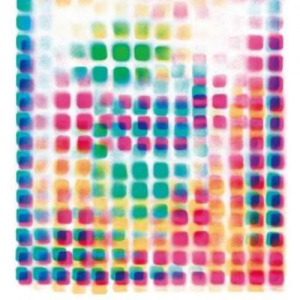On-U Sound
Nisennenmondai have turned their exploration of the extremes of guitar, bass and drum repetition into something of an artform, as well as seeming to find new and ever-inventive ways to continuously revisit and repurpose the same basic sound and tracks which first appeared on their now-classic N LP in 2013. With the superb live in the Clouds Hill studio version of N (and more) bringing the engrossing immediacy of their stage presence to both disc and video, and having already been remixed by Shackleton (the fruits of which appeared as both a 12″ EP and as extra tracks added to the expanded N’), the trio have now taken the variations on their immediately-identifiable form to the next logical stage by enlisting Adrian Sherwood to take the mixing desk controls.
have turned their exploration of the extremes of guitar, bass and drum repetition into something of an artform, as well as seeming to find new and ever-inventive ways to continuously revisit and repurpose the same basic sound and tracks which first appeared on their now-classic N LP in 2013. With the superb live in the Clouds Hill studio version of N (and more) bringing the engrossing immediacy of their stage presence to both disc and video, and having already been remixed by Shackleton (the fruits of which appeared as both a 12″ EP and as extra tracks added to the expanded N’), the trio have now taken the variations on their immediately-identifiable form to the next logical stage by enlisting Adrian Sherwood to take the mixing desk controls.
With an album so well and often revisited as
N has become, the expectations for what Sherwood can bring to the distinctive Nisennenmondai groove that hasn’t already unwound itself in a seemingly endless parade of micro-variations of the core machinations are naturally quite high. Every part of their sound is treated as a percussive element that makes a specific contribution to a minimal techno-style writhing, mindbending collision of organic — yet almost mechanically perfect — instrumental precision dealt out with ultra-strict tempo control. Sherwood takes on the tensions between rhythm and incipient melody with his customary attention to nuance brought to the fore; Nisennenmondai’s restricted sound palette allows little room for any stray echoes or tweaked electronic slur to pass without breaking the spell that their music engenders, but
Sherwood demonstrates just why his mixed and dubbing skills are justifiably termed legendary time and again throughout, making it sound effortlessly simple as he does so.
This he does so in stages, from the barely touched, stripping-down to basic principles approach he takes on “#3” to the maximal delve into dubspace echo chamber that concludes the album proper under the title “#5”. How much of that ticking cymbal pulse the listener can stand is of course part of the process, and it runs throughout the album (and all Nisennenmondai albums since N) as a continuous thread that keeps things anchored on a never-ending timestream, like Ariadne’s string that she unwound through the Minotaur’s lair to defeat his labyrinth. The maze metaphor is highly appropriate to both the essential Nisennenmondai method and to Sherwood’s take on it. Meanders and side junctions are part of the process, for sure, but the sense of urgency that the music engenders also contributes to the sensation of a chase towards the final exit, a destination that may turn out (to mix some classical metaphors) more akin to aspect of the world serpent Ouroboros, always biting its own tail in a cosmic wheel of endless returns and infinite rebirth.
Having already been released in Japan in 2015 on
Beat Records, the
On-U Sound edition offers two storming bonus tracks recorded live in Tokyo in 2015. With an appreciative audience and the thrill of a live mix to spur matters on, the two takes on “A'” and “B-1′” bristle with
a fearsome energy that frequently takes off into the outer limits of spacey dub. As an adept of the live mix, Sherwood never once comes close to losing those renowned controls; but at points it feels like he is on the verge of doing so. Each time he brings the delay and fragmented hits back from the abyss is a thrill, and simply encountering to these tracks in the comfort of a suitable stereo-listening environment is almost physically exhausting. In the flesh, it must have been quite a wild ride for band, audience and dub maestro alike, and doubtless there will have been some tired-out bodies and exquisitely blown minds at
Unit that evening once the last rippling pulsation faded into echo and applause.
-Antron S Meister-
 have turned their exploration of the extremes of guitar, bass and drum repetition into something of an artform, as well as seeming to find new and ever-inventive ways to continuously revisit and repurpose the same basic sound and tracks which first appeared on their now-classic N LP in 2013. With the superb live in the Clouds Hill studio version of N (and more) bringing the engrossing immediacy of their stage presence to both disc and video, and having already been remixed by Shackleton (the fruits of which appeared as both a 12″ EP and as extra tracks added to the expanded N’), the trio have now taken the variations on their immediately-identifiable form to the next logical stage by enlisting Adrian Sherwood to take the mixing desk controls.
have turned their exploration of the extremes of guitar, bass and drum repetition into something of an artform, as well as seeming to find new and ever-inventive ways to continuously revisit and repurpose the same basic sound and tracks which first appeared on their now-classic N LP in 2013. With the superb live in the Clouds Hill studio version of N (and more) bringing the engrossing immediacy of their stage presence to both disc and video, and having already been remixed by Shackleton (the fruits of which appeared as both a 12″ EP and as extra tracks added to the expanded N’), the trio have now taken the variations on their immediately-identifiable form to the next logical stage by enlisting Adrian Sherwood to take the mixing desk controls.


